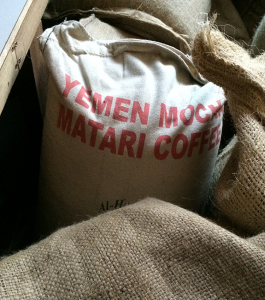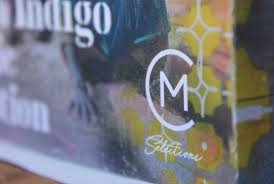We are spoiled. So many great coffees and so little time to drink them. One of the reasons that Talk Coffee does not roast for the wholesale market: Cafes, stores etc is that it would bring price and and green quality into to play. The inevitable result is compromise when you have to roast something to a price point- so we don’t.
This week we have two special new arrivals and yes, this time we’re bragging! Both are available for preorder and will be roasted later in the week and then go into rotation with the multitude of stunning coffees we currently have to choose from.
 I have always referred to Yemen as my desert island coffee. It’s an heirloom coffee and thought to be the origin of the world’s coffee. Yemen is the coffee I’d choose if I had to pick one to drink exclusively for the rest of my life.
I have always referred to Yemen as my desert island coffee. It’s an heirloom coffee and thought to be the origin of the world’s coffee. Yemen is the coffee I’d choose if I had to pick one to drink exclusively for the rest of my life.
These little natural process beans have a tough life: Not much water and they’re grown in a harsh, inhospitable environment. Things are currently extremely difficult for those who call Yemen home. The civil war continues and there is little to eat, little to trade and disease. The last Yemen we saw was from the 2014/2015 crop. This one (2017/2018) is a little more subdued, but I am in awe that some has been grown and has miraculously managed to find its way out of a port. Al-Hamdani has a great reputation and this is the real deal.
The situation in Yemen remains dire and we feel it’s important to do something, regardless of how little it may be in the big picture of things. Your purchase of this coffee includes $5/480g bag which we’ll donate to Unicef on your behalf. Talk Coffee will be matching your donation dollar for dollar and we’ll publish proof of donation here.
Ethiopia Yirgacheffe CM Natural Indigo Lot 0318
“Carbonic Maceration? They do that to wine don’t they, but I’ve never heard of it for coffee?”
This newly arrived carbonic maceration natural Yirgacheffe is comprehensively the best Yirgacheffe natural process we have ever seen. It cupped at 90+ points to receive a Talk Coffee “Extreme Beans” rating.
The Carbonic Maceration process is generally used in winemaking, in which whole grapes are fermented in a carbon dioxide-rich environment prior to being crushed for their juice. The CM method also utilises carbon dioxide in order to push boundaries of fermentation and development in experimental coffees. We’ve never seen one prior to this.
How is this processing different from normal coffee processing?
The terms that we are accustomed to in the coffee world include natural, washed, honey, semi-washed and so on. These processing techniques use a variety of methods to extract the green beans/seeds from the coffee cherries.
The CM process does not replace these methods; rather, it adds another step in processing.
Coffee cherries are picked when perfectly ripe and then hand sorted and floated to remove any stray unripe or over-ripe cherries. Natural CM Selections coffees are placed in fermentation tanks in the presence of high carbon dioxide concentrations and after fermentation, the coffee is dried on African beds for 12-18 days before being stored to rest before dry milling.
What does the carbonic maceration method do to the coffee?
The result of a carbonic maceration process is increased development of flavour profiles. By using a controlled, carbon dioxide-rich environment to ferment the coffees, the activity of yeasts and bacteria are is controlled during fermentation to intensify and further develop the flavours of the coffee without risk of too much oxidisation or alcoholic fermentation, which will ruin the profile of the coffee.
Who came up with the idea?
The carbonic maceration method is often attributed to winemakers in Beaujolais, France. In the coffee world, it was first publicly introduced by Project Origin founder, Saša Šestić. In the entry for Carbonic Maceration in his book The Coffee Dictionary, Maxwell Colonna-Dashwood says the following:
“It was in 2015 at the World Barista Championship that the coffee community was introduced to the idea [of carbonic maceration] when the Serbian-born Australian Saša Šestić won the competition with a coffee that made use of the method … Šestić, together with his collaborator, the Colombian farmer Camilo Merizalde, experimented with this technique to produce a coffee that had more aromatic complexity but a lower concentration of sharp-tasting acetic acid.”